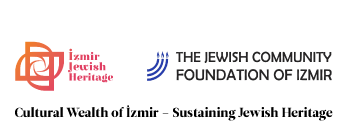Shabbetai Tzvi
In the mid-17th century, belief in Shabbetai Tzvi spread like wildfire throughout the Jewish world, sweeping up entire communities and creating a crisis of faith unprecedented in Jewish history.
Shabbetai Tzvi was said to be born on the 9th of Av in 1626, to a wealthy family of merchants in Izmir, Turkey. He received a thorough Talmudic education and, still in his teens, was assigned as a hakham — a member of the rabbinic elite. However, Shabbetai Zevi was interested less in Talmud than in Jewish mysticism. Starting in his late teens he studied kabbalah , attracting a group of followers whom he initiated into the secrets of the mystical tradition.
In 1648, Shabbetai Tzvi declared himself to be the messiah as a result of which the rabbis banished him from his hometown, and he spent much of the 1650s traveling through Greece and Turkey. He was eventually expelled from the Jewish communities in Salonika and Istanbul as well. The turning point in his messianic career came in 1665 as the result of a meeting with Nathan of Gaza.

Nathan tried to convince Shabbetai of his messianic identity and in 1665 publicly announced the appearance of the messiah. In spite of the opposition of most rabbis, initiated a mass movement of repentance, fasting and ascetic acts to prepare the way for the coming redemption. In September 1665, he announced that a fundamental cosmic shift had taken place and that within the year, Zevi would bring back the lost tribes of Israel and marry Rebecca, the daughter of a resurrected Moses.
In the same month, Shabbetai Tzvi traveled to Izmir amidst an atmosphere of religious agitation. Rabbis and communal leaders were swept up in the excitement. With his followers, he stormed the Portuguese synagogue in Izmir that was used by his opponents, called up family members and friends — including women — to the reading of the Torah, and had them pronounce the divine name in their blessings.
Messianic enthusiasm began to spread throughout the communities of the Diaspora. Repentance, extreme asceticism, scourging, and fasting alternated with periods of ecstatic joy. Messianic prayers written by Nathan of Gaza were published. A part of the Jews began to make travel plans for their imminent departure to the Land of Israel.
Shabbateanism influenced communities all over the Jewish World and the movement took on a momentum of its own. Around the Jewish world, a split emerged between believers and their opponents.
In 1666 Shabbetai Tzvi was arrested in Constantinople and offered the choice of apostasy or death, He chose to convert to Islam. Shabbetai Tzvi became Aziz Mehmed Effendi, and, with a royal pension, lived until 1676, secretly practicing Jewish ritual. His letters reveal that at the time of his death, he still believed in his messianic mission.
While Shabbetai Tzvi’s conversion created a crisis of faith for most of his followers, the movement lived on, sustained by kabbalistic explanations for the apostasy and by its adherents.
Shabbateanism’s long-term impact was far-reaching. Its most immediate influence was in the formulation of a new version of Jewish mysticism — the Hasidic movement, born in late 18th-century Poland. The quietistic, inwardly spiritual tone of early Hasidism was a conscious reaction against the messianic excesses of the Shabbeteans, while the Hasidic Jews’ unconditional faith in their rebbe or tzaddik had as its precedent the dynamic between Shabbetai Zevi and his followers. In the late 20th century, the resurgence of messianic fervor among some Chabad-Lubavitch Hasidic Jews lent credence to this relationship.

